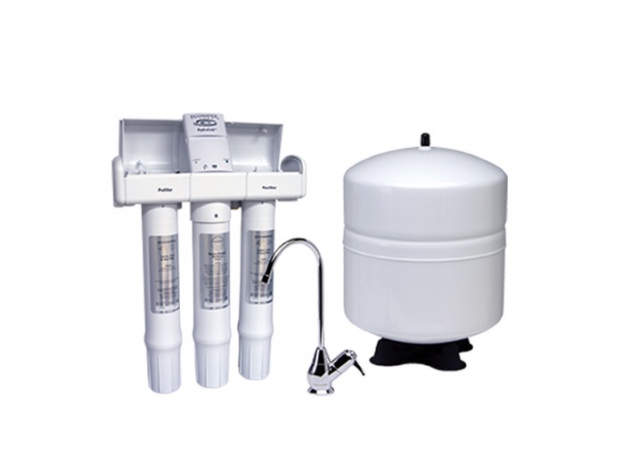With more than 30 years’ experience in the residential and commercial water treatment space, Mark Nelson is a Class 1 Drinking-Water Operator and a CBWA (Canadian Bottled Water Association) Certified Plant Operator. As founder and president of Nelson Water in Ottawa, Mark focuses on dealing with challenging water treatment system designs for problem water. He also heads the largest water bottling plant in the city of Ottawa with a delivery network throughout the Valley.
Reverse Osmosis or RO water filtration systems are an excellent way to obtain clean water, making it safer and more pleasant to drink. Like any sophisticated system, RO devices rely on parts working together in harmony. Unfortunately, parts can sometimes fail, so it is crucial that your system receives regular maintenance. This can help catch minor issues before they can develop into a more serious problem that is more expensive and harder to fix. A great example of this is a slower flow rate, and we’ll explore the reasons behind this issue in more detail here.
- Clogged in the Reverse Osmosis Filters
Water treatment experts often recommend changing filters every 6 to 36 months, depending on the specific model. When filters are not changed, they can clog with trapped contaminants, which prevents the filter from working properly. In this scenario, the flow rate is reduced, and your storage tank fill rate may increase from 2 to 4 hours up to 4 to 6 hours. Fortunately, this problem can be avoided by setting a filter changing schedule and ensuring you stick to it.
- Insufficient Air Pressure in the RO Tank
If your RO storage tank has low air pressure, the water flow rate to the faucet will be affected. The tank air pressure should be 7 to 8 psi when there is no water in the tank. To check your tank air pressure, remove any water and find the blue cap on the side of the tank covering the Schrader valve. You can use an air pressure gauge to check the tank air pressure. If the pressure is too low, add enough air using a pump to bring it up to 8 psi. Just be sure to add a little air at a time to avoid rupturing the air bladder.
- Ruptured Tank Bladder in the RO System
If you only get one cup of water at the normal pressure before it slows to a trickle, it may indicate that your air bladder has ruptured. Unfortunately, the air bladder cannot be repaired, and you will need help from your local water treatment technician to replace the entire storage tank.
- Kinks in the Water Line
If your water line has a kink somewhere, the water flow rate will be considerably slowed down. Check your water line to ensure that it is correctly orientated. During your checks, take the opportunity to find your water supply valve to check it is fully opened.
- Water Pressure Changes
RO filtration systems need a pressure of at least 40 psi to operate, but the ideal water pressure for optimal efficiency is 60 psi. If your water supply is carrying out maintenance, the water pressure may temporarily drop, and this will affect how your RO system will work for a short time. Normal operations should resume as soon as the normal water pressure is restored. If the water pressure changes go on for a prolonged period, check with your local water utility company to discover why your water pressure has changed.

